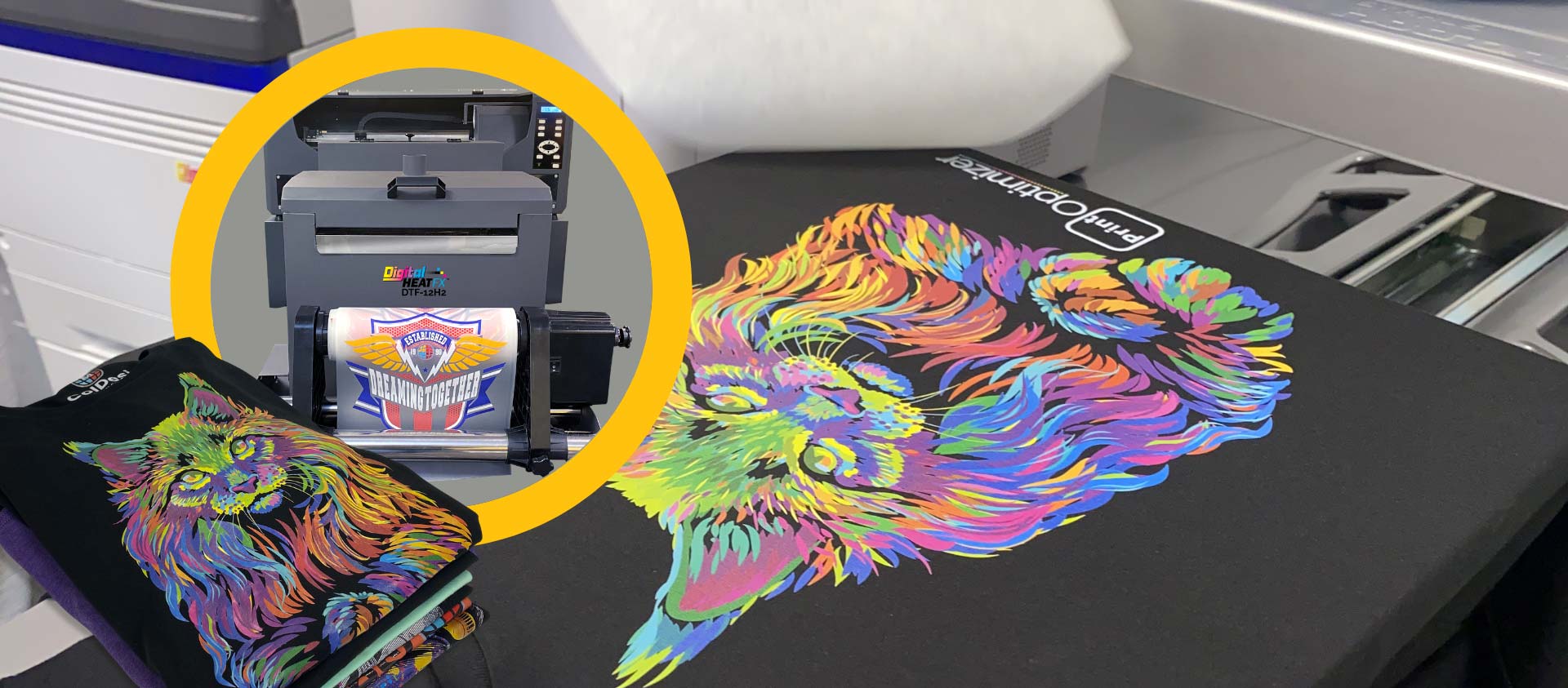The Future of Fashion: Discovering DTF Printing Innovation in the Fabric Industry
Amongst these improvements, Straight to Movie (DTF) printing technology has emerged as an appealing competitor, using one-of-a-kind capacities and possibilities for developers and producers alike. This innovative printing technique has actually sparked interest due to its potential to revolutionize traditional textile printing procedures.
Advancement of Fabric Printing
From the ancient worlds making use of strategies like block printing to the digital revolution of today, fabric printing has constantly pushed borders. As the craft spread to other components of the world, new approaches such as screen printing and roller printing arised during the Industrial Revolution, reinventing the fabric industry.
In the 20th century, advancements in modern technology caused the development of rotating screen printing, enabling faster and much more intricate styles. The introduction of digital fabric printing in the late 20th century marked a substantial shift in the direction of more functional and sustainable printing techniques. Today, with innovations like Direct-to-Fabric (DTF) printing modern technology, designers can develop dynamic, thorough prints with higher performance and reduced ecological influence. The development of fabric printing showcases an abundant background of creative thinking, ingenuity, and technological progression in the globe of style and design.
Benefits of DTF Innovation
With the advancement of fabric printing techniques from ancient methods like block printing to modern-day innovations such as digital printing, the introduction of Direct-to-Fabric (DTF) innovation has actually dramatically boosted the efficiency and sustainability of textile printing processes. One of the primary benefits of DTF innovation is its capacity to straight publish layouts onto textile without the demand for transfer documents, which reduces waste and simplifies the production process. Additionally, DTF printing enables greater color vibrancy and detail accuracy contrasted to typical approaches, making it possible for fabric suppliers to develop high-grade and complex layouts with ease.
Moreover, DTF technology is recognized for its convenience, as it can be made use of on numerous kinds of textiles, consisting of natural fibers like wool, cotton, and silk, along with artificial materials such as polyester and nylon (DTF Printing). This flexibility opens a large range of possibilities for suppliers and developers to try out various appearances and materials, resulting in even more innovative and unique products in the apparel industry. Overall, the execution of DTF innovation stands for a considerable development in fabric printing, supplying various benefits that add to the future sustainability and creativity of the market
Sustainability in Fashion Manufacturing
Emphasizing eco-friendly methods is paramount in modern style manufacturing, straightening with the growing customer need for lasting items. In the last few years, the garment industry has actually encountered enhancing analysis due to its substantial environmental effect, consisting of excessive water usage, chemical air pollution, and textile waste. As an action, many style brand names are now including lasting practices right into their manufacturing processes to reduce injury to the environment.
Sustainability in fashion manufacturing includes numerous aspects, such as utilizing natural and recycled materials, minimizing power intake, executing honest labor techniques, and advertising transparency throughout the supply chain. Furthermore, innovations in technology, like DTF printing, offer chances to additionally boost sustainability in fabric production. his explanation This technology enables accurate printing on materials, reducing ink wastage and water usage compared to conventional printing techniques.
Style Liberty and Modification

In addition, DTF printing assists in modification on a scale formerly unattainable, allowing for customized apparel and distinct items customized to individual choices. On the whole, DTF printing innovation changes the design landscape in the textile sector, offering limitless opportunities for creative expression and customized style.
Influence on Supply Chain & Market Trends
DTF printing innovation in the fabric industry is reshaping supply chain dynamics and influencing market trends through its effectiveness and personalization abilities. By making it possible for on-demand printing and removing the demand for huge supplies, DTF modern technology streamlines the supply chain process. Producers can produce items as needed, reducing waste and storage costs. This just-in-time manufacturing version additionally permits for quicker feedback to market needs and patterns, causing a much more dexterous and responsive supply chain.
Furthermore, the modification potential of DTF printing innovation is revolutionizing the market patterns in the fabric industry. As an outcome, DTF innovation is driving a change towards even more ingenious and customer-centric approaches within the textile sector, forming the future of fashion.

Verdict
To conclude, DTF printing innovation is changing the textile market by supplying numerous benefits such as style modification, freedom, and sustainability. This ingenious innovation is improving the future of style manufacturing, impacting supply chains, and driving market trends towards much more effective and green practices. As the sector remains to develop, DTF printing will certainly play an essential you can look here function fit i thought about this the method textiles are created and consumed in the years to come.
From the ancient worlds using techniques like block printing to the digital revolution of today, fabric printing has actually continuously pushed limits. As the craft spread to other parts of the globe, brand-new techniques such as screen printing and roller printing emerged throughout the Industrial Change, changing the fabric market.
The introduction of electronic textile printing in the late 20th century noted a substantial change towards more lasting and flexible printing approaches.With the advancement of textile printing techniques from old techniques like block printing to modern innovations such as electronic printing, the introduction of Direct-to-Fabric (DTF) innovation has significantly boosted the effectiveness and sustainability of textile printing procedures (DTF Printing).In reaction to the crucial shift in the direction of sustainability in fashion production, the fostering of innovative innovations like DTF printing not only addresses ecological issues yet likewise opens up avenues for unmatched style freedom and personalization in the textile market
Comments on “Beyond Basics: DTF Printing Techniques for Exceptional Textile Creations”